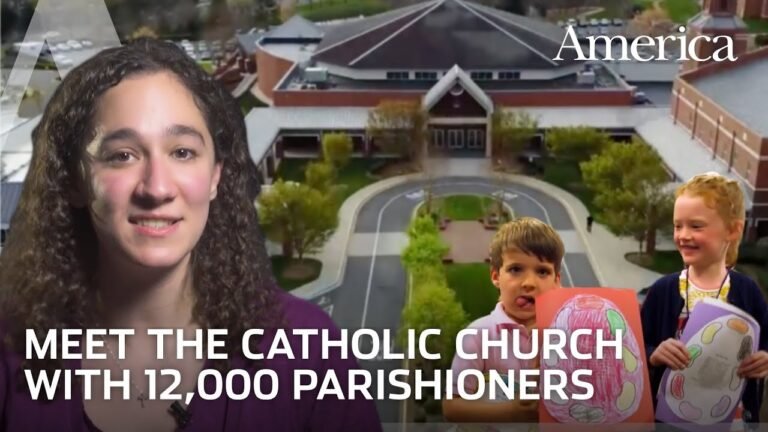Rediscovering Faith: The Journey of a Recovering Catholic
In a world where tradition often clashes with modern beliefs, the journey of a recovering Catholic is both personal and profound. Navigating the complexities of faith, identity, and community, many individuals find themselves reevaluating their relationship with the Church and its teachings. This exploration not only highlights the struggles and triumphs of shedding old beliefs but also illuminates the path toward self-discovery and spiritual independence. As the narrative of the recovering Catholic unfolds, it reveals a rich tapestry of resilience, questioning, and ultimately, liberation.
What challenges do recovering Catholics often face?
Recovering Catholics often face guilt, confusion about beliefs, adjusting to new identities, and navigating relationships with family and friends who maintain traditional views.
Are lapsed Catholics considered to still be Catholics?
Lapsed Catholics represent a unique segment of the Catholic community, maintaining their identity even if they are not regularly engaged in church activities. This group often embodies the complexities of modern faith, where personal beliefs may not align perfectly with traditional practices. Despite their absence from Mass, many lapsed Catholics continue to resonate with the values and teachings of the Church, indicating that their spiritual connection remains intact.
The phenomenon of lapsed faith is not limited to Catholicism; it extends to evangelical and mainline Protestant groups as well. Individuals within these denominations may also identify as part of their faith community while attending services infrequently. This shared experience highlights a broader trend of individuals navigating their spiritual journeys, seeking meaning in a way that fits their contemporary lives.
Ultimately, the label of “lapsed” does not strip away the fundamental identity of these individuals. They still carry the imprint of their faith upbringing, which influences their perspectives and choices. Whether through cultural ties or personal convictions, lapsed Catholics and their Protestant counterparts illustrate that faith can evolve, adapting to the rhythms of life while still retaining a sense of belonging to their religious heritage.
How does Catholic guilt manifest emotionally?
Catholic guilt often surfaces as an overwhelming sense of obligation to confess and atone for perceived wrongdoings, regardless of their significance. Individuals may find themselves burdened by a constant need to apologize for sins, both real and imagined, leading to an internal dialogue filled with self-reproach. This relentless pursuit of absolution can create a cycle of anxiety, where the desire for forgiveness overshadows the joy of faith.
Additionally, the weight of Catholic guilt is frequently intertwined with feelings of shame, particularly regarding matters of sexuality and personal expression. Rooted in the teachings of purity culture, many individuals struggle with reconciling their natural desires with the expectations imposed by their faith. This can lead to a profound internal conflict, where the longing for acceptance clashes with the fear of judgment, deepening the emotional turmoil associated with Catholic guilt.
Do Catholic indulgences still exist today?
Indulgences, once at the center of controversy during the Reformation, still hold significance in modern Catholicism. While the excesses associated with indulgences have been curtailed, their practice remains a recognized aspect of faith, reaffirmed by the Council of Trent. Today, Catholics view indulgences as a means to reduce temporal punishment for sins, reflecting a commitment to spiritual growth and reconciliation within the church.
Embracing Spiritual Growth Beyond Tradition
In a world where traditions often dictate the path to spiritual fulfillment, many individuals are discovering the beauty of forging their own unique journeys. Embracing spiritual growth beyond established norms allows for a refreshing perspective that encourages personal exploration and self-discovery. By stepping outside the boundaries of conventional practices, individuals can engage with diverse philosophies and teachings that resonate deeply with their own experiences and beliefs.
This journey of exploration fosters a profound connection with the self and the universe, inviting practitioners to question, reflect, and evolve. As people delve into various spiritual disciplines—be it meditation, mindfulness, or even nature walks—they cultivate a sense of inner peace that transcends dogma. This approach not only enriches their spiritual lives but also promotes a greater understanding of the interconnectedness of all beings, encouraging compassion and empathy in their interactions with others.
Ultimately, embracing spiritual growth beyond tradition empowers individuals to create a personalized path that aligns with their values and aspirations. It opens the door to a vibrant tapestry of experiences, where wisdom is drawn from both ancient teachings and contemporary insights. As seekers navigate this expansive landscape, they find that true spirituality is not confined to rigid structures but is instead a dynamic journey of the heart and mind, leading to profound transformation and fulfillment.
Finding Hope in the Shadows of Doubt
In moments when uncertainty looms large, hope can feel elusive, hiding in the shadows of our doubts. Yet, it is precisely in these challenging times that we must seek out the flickers of light that guide us forward. Embracing vulnerability allows us to confront our fears, transforming them into stepping stones toward resilience. By acknowledging our doubts, we can begin to unravel their power and create space for hope to flourish.
Cultivating a mindset of growth is essential in this journey. Each setback offers a lesson, revealing strengths we may not have recognized in ourselves. As we navigate through the darkness, it becomes clear that every challenge holds the potential for renewal. Surrounding ourselves with supportive communities amplifies our capacity to find hope, as shared experiences foster connections that remind us we are not alone. Together, we can illuminate even the dimmest pathways.
Ultimately, hope thrives in the actions we take, no matter how small. By setting achievable goals and celebrating incremental progress, we reinforce our belief in a brighter future. It is through these deliberate steps that we transform our doubts into a foundation for growth. As we step out of the shadows, we discover that hope is not just an abstract feeling but a powerful force that propels us toward our aspirations, guiding us through life’s uncertainties.
Rebuilding Belief: A Personal Transformation
In the journey of life, we often encounter moments that challenge our faith in ourselves and the world around us. The process of rebuilding belief begins with introspection, a deep dive into our experiences and emotions. It’s about recognizing the shadows of doubt that cloud our vision and learning to confront them head-on. This transformation is not merely about finding confidence; it’s about rediscovering a sense of purpose that fuels our aspirations and rekindles our passion for life.
As we embark on this path, we must embrace vulnerability as a strength, allowing ourselves to be open to new perspectives and experiences. Surrounding ourselves with supportive communities and mentors can play a vital role in this metamorphosis, providing the encouragement needed to take meaningful steps forward. Each small victory, whether it’s overcoming a fear or achieving a personal goal, becomes a building block in the restoration of our belief system, empowering us to rise above past failures.
Ultimately, rebuilding belief is a continuous journey marked by resilience and growth. It invites us to cultivate a mindset that embraces challenges as opportunities for learning and development. By nurturing our self-worth and celebrating our progress, we create a foundation of unwavering belief that propels us toward our dreams. This personal transformation not only enriches our own lives but also inspires those around us to embark on their own journeys of self-discovery and empowerment.
Navigating the Path from Guilt to Grace
Guilt can often feel like a heavy burden, weighing down our hearts and clouding our judgment. It’s a natural emotion, arising from our desire to do right by ourselves and others, but when left unchecked, it can lead to a cycle of self-punishment and regret. Recognizing this feeling is the first step toward healing. By embracing self-compassion and understanding that everyone makes mistakes, we can begin to shift our perspective, allowing us to learn from our experiences rather than be defined by them.
Transitioning from guilt to grace involves an intentional journey of self-reflection and forgiveness. It requires us to acknowledge our missteps without letting them dictate our self-worth. As we cultivate a mindset of growth and acceptance, we open ourselves to new possibilities and deeper connections with others. This transformation not only liberates us from the shackles of guilt but also empowers us to forge a more compassionate and fulfilling life, where grace becomes the guiding principle in our interactions with ourselves and the world around us.
Embracing the journey of a recovering Catholic opens the door to profound personal growth and spiritual exploration. By reconciling past experiences with newfound insights, individuals can cultivate a more authentic faith that resonates with their values and beliefs. This transformative process not only fosters a deeper understanding of self but also encourages meaningful connections with others on a similar path. Ultimately, reclaiming one’s spirituality becomes a powerful testament to resilience and the enduring quest for fulfillment.







